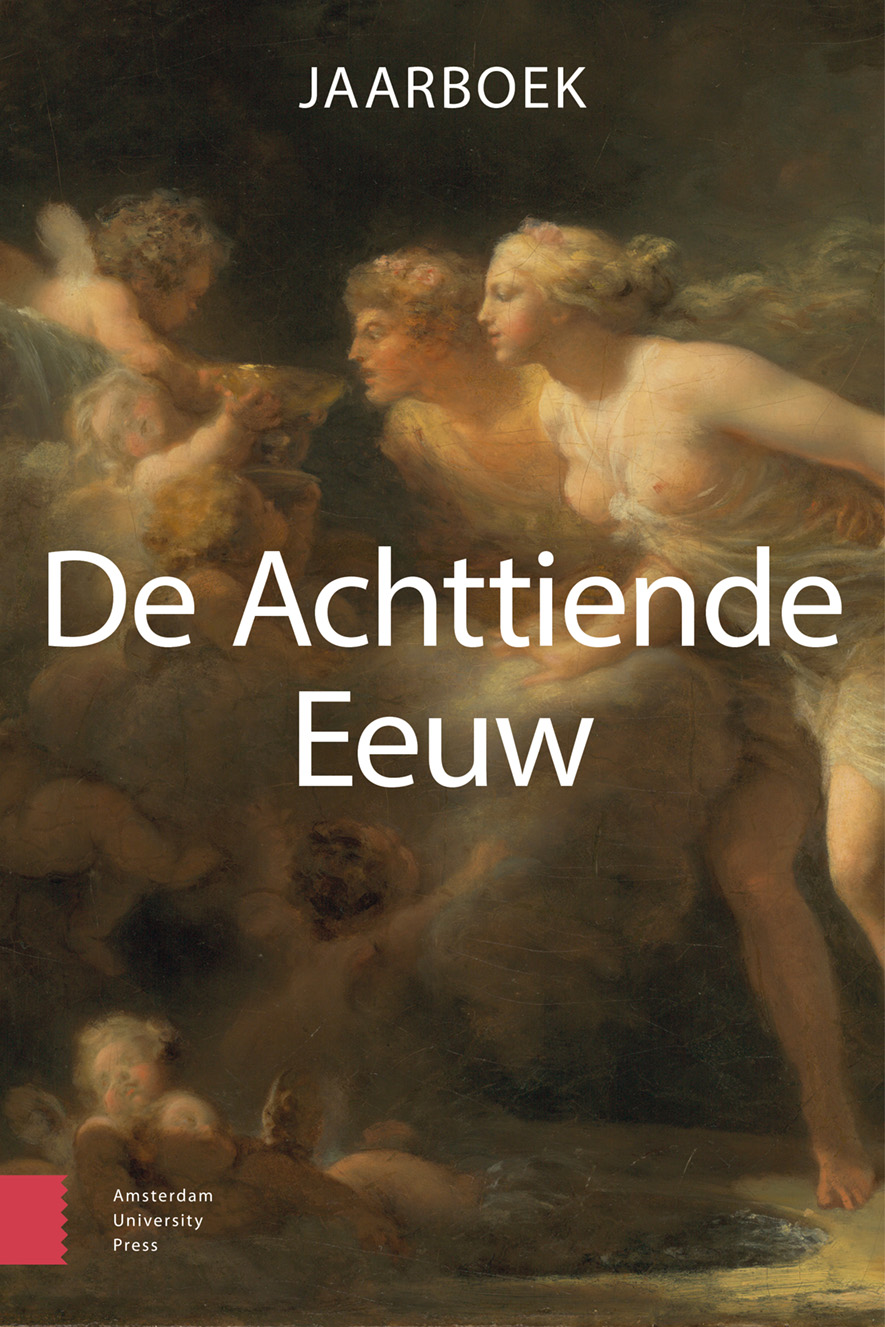- Home
- A-Z Publications
- De Achttiende Eeuw
- Previous Issues
- Volume 53, Issue 1, 2021
De Achttiende Eeuw - Volume 53, Issue 1, 2021
Volume 53, Issue 1, 2021
Language:
Dutch
-
-
oa Vermijdbaar verval?
More LessBy Jan RotmansAbstract The fear that a republic will inevitably decline occupied a central place in late eighteenth-century Dutch thought, but concrete examples are rarely analyzed in depth. This article takes a closer look at a largely ignored thinker from this era, Jan Hendrik van Dongen (1766-1789), focusing on the theme of republican decline in the collection of his most important writings: Mijn Tijd Winst (1789-1791). Special attentio Read More
-
-
-
oa De pastelliste Susanne Caron
More LessAbstract This biographical sketch of the little-known French pastellist Susanne Caron focuses on September 1769, when, some eighteen months after her arrival in Holland, her name suddenly appeared in newspapers throughout Europe. In Amsterdam, she portrayed Pascal Paoli (1725-1807), the elected leader of the Corsican republic. After suffering a crushing defeat by the French invaders, Paoli was on his way to London to g Read More
-
-
-
oa Over de lust van de vrouw
More LessAbstract In 1679, Hadriaan Beverland (1650-1716) published a study on the sexual lust of women, titled De Stolatae Virginitatis Iure. Scholars who have looked at this rebellious humanist and his sexual studies have unanimously concluded that the publication of De Peccato Originali, his infamous work on sexual lust and original sin, led to Beverland’s arrest and eventually his banishment from Holland and Zeeland. Lookin Read More
-
-
-
oa ‘De trou schijnt schoon’
More LessAbstract The Antwerp manuscript ‘Het Mengelmoes’ from 1696 contains several ‘taboo texts’, in which views and opinions were expressed that were inconsistent with those of the Catholic Church. In manuscript, these texts escaped ecclesiastical censorship. This article will present and discuss a selection of these ‘taboo texts’, since some of them bear witness to libertine ideas in the late seventeenth-century Southern Lo Read More
-
-
-
oa Geofferd op het altaar van de deugd
More LessAbstract The tragic story of Sophia van Noortwijck (1673-1710) and her mother Sophia van der Maa (1636?-1710) is a well-documented and suitable case to investigate prevailing ideas about morality in the county of Holland around 1700. Because of their promiscuous and fraudulent behaviour, these wealthy ladies were involved in a scandalous trial before the high court in The Hague. Mother and daughter had floute Read More
-
-
-
oa Dom Bougre en het beeld van de kartuizer monnik in de achttiende-eeuwse Nederlanden
More LessAbstract The philosophical-pornographic novel Dom B… portier des chartreux, écrite par lui-même (1740) is a fictitious autobiography by a charterhouse’s porter about the years preceding his joining of the order. The author criticizes the hypocrisy of the regular priests, who do not at all abstain from sex while at the same time disputing the opinion that sexuality was not wanted by God. In the opinion of the charterhouse’s Read More
-
-
-
oa Sodemieterij, eigendomsindividualisme en goddeloze natuur
More LessAbstract When organized homosexual emancipation took root in the late nineteenth century, it was based to a large extent on the then prevailing biomedical and psychiatric conceptualizations. These presented homosexuality as an innate inclination of a minority, while science-based knowledge was seen as the road towards societal acceptance of such leaning. In this article it is argued that, as early as in the eighteent Read More
-
-
-
oa ‘De liefde van eene ernstige zijde’
More LessAbstract For the modern reader, the sentimental novel has become virtually unreadable. Yet, for the eighteenth-century reader it meant a ‘revolution of feeling’ that can be regarded simultaneously as a consequence of, and a counterbalance to, early modern individualism. Passion and emotion were increasingly valorized because they provided an escape from the isolation produced by the Enlightenment emancipations Read More
-
-
-
oa Seksualiteit in Suriname
More LessBy Hilde NeusAbstract The social, gendered, and racial relations in the Dutch colony of Suriname have been predominantly studied in the context of the plantation system and the hierarchized divide between masters and those who were enslaved. More recently, however, scholars have demanded attention for the ambiguous position of free people of color within these colonial dynamics. This article aligns with this recent research tr Read More
-
Most Read This Month
Article
content/journals/25894617
Journal
10
5
false
en


